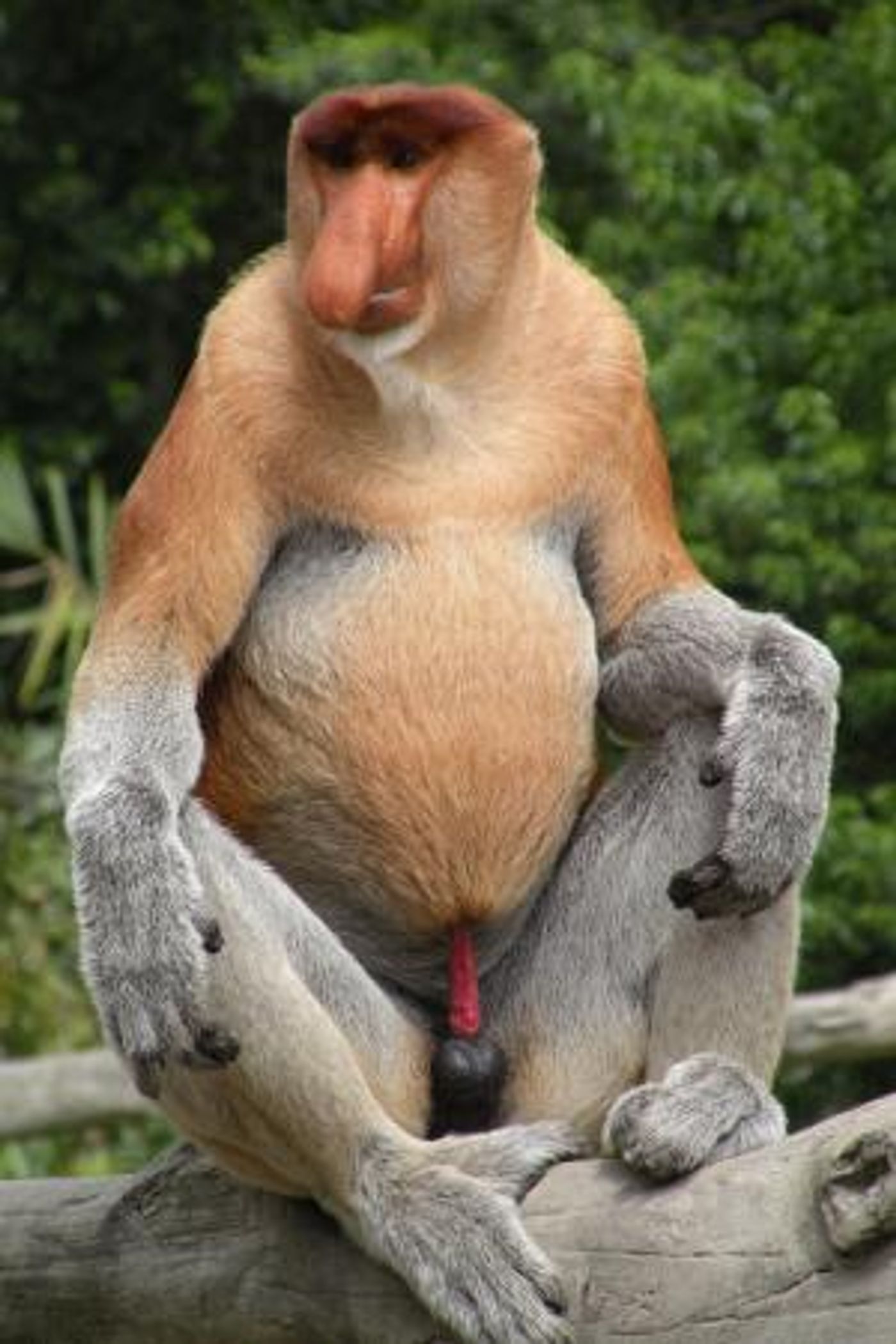Best known for its impressively sized honker of a nose and engorged beer-gut belly, proboscis monkeys are quite the sight for staring. However, both of these physiological characteristics serve very special purposes. As far as the tummies, these animals are specialized plant-eaters, and “appear permanently potbellied because of their huge chambered stomachs, which contain a bacterial soup that helps them digest seeds, leaves, and green fruits.”
National Geographic explains that they avoid sweet fruits on purpose because the rapid fermentation from such fruits could cause deadly bloating.
Yet it is the nose which grabs the most outright attention - as it is rightly meant to do. Proboscis male monkeys use their large noses to attract females, by look and sound. “Just like the antler’s of a bull moose, the nose of a proboscis monkey displays that monkey’s status. This monkey’s nose can get as large as 7 inches. The males have larger noses than females and the older males have larger noses than the young males, just like moose antlers,” explains
Wild Facts. The proboscis monkey’s nose also works to amplify sound for warning or mating calls. “When the monkey is threatened the blood will rush to the nose and actually cause this already large nose to swell. This swelling allows the nose to act as a resonating chamber,” so as to emit the loudest sound plausible. Talk about cool physiology!
Unfortunately, Nasalis larvatus is facing bigger obstacles than just its nose. Found only in Borneo, Brunei, Kalimantan, and Sabah and Sarawak, fewer than 8,000 proboscis monkeys are thought to remain in the wild today. The species’ dwindling population size is especially concerning because it is extremely difficult to maintain healthy individuals in captivity, for research or conservation purposes. Their decreasing numbers is due largely to habitat loss and degradation, and the list of threats they come nose to nose with is long (pun intended): settlement, agriculture, swamp drainage, mining, hunting, shrimp farming, and fire.
Occupying riparian-riverine forest, coastal lowland forest, peat swamp, freshwater swamp forest, and mangroves, perhaps it is no surprise that these monkeys are graceful swimmers. However, their habitat also happens to be perfect for human development, specifically for agricultural and logging feats. In particular, pressure from shrimp farming and palm-oil plantations are devastating the monkey’s homeland. Galle and Dragozet comment on
blog.nus.edu that proboscis monkeys are especially impacted because “Heavy habitat fragmentation hinders their ability to disperse, mate, interchange its gene pool, and acquire adequate food resources.” Luckily for them, conservation strategies are quickly being implemented in the form of several sanctuaries throughout Borneo as well as a forestry resources plan stating that more committment must be put forth for reestablishing forest corridors. Hopefully, these steps are enough to sound the horn for such an fascinating animal and call to light the imperative link between habitat preservation and species conservation.
Sources:
National Geographic,
Wild Facts,
Primate Info Net,
Blog.nus










